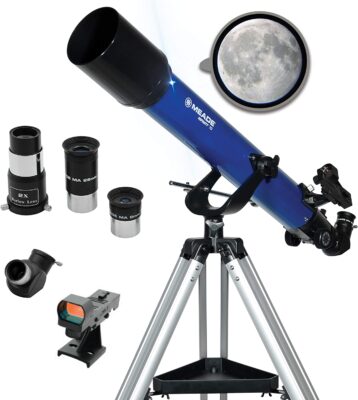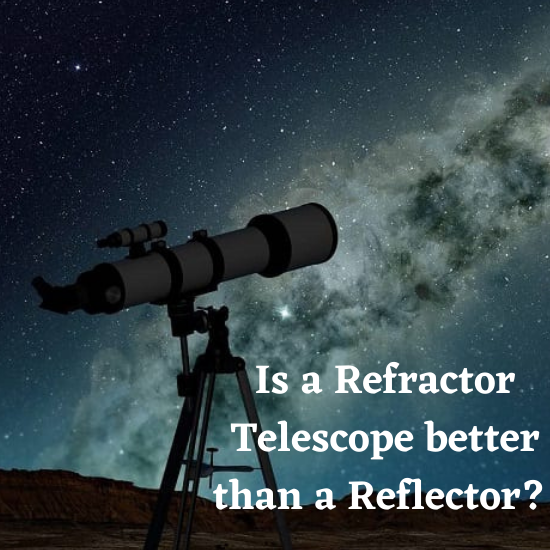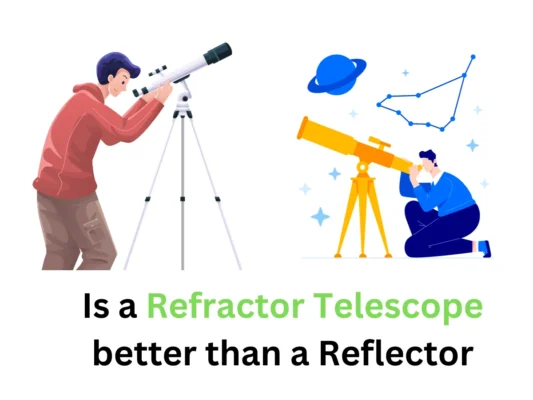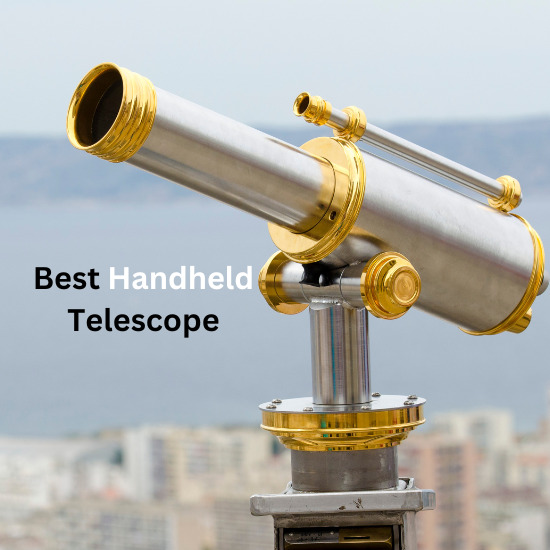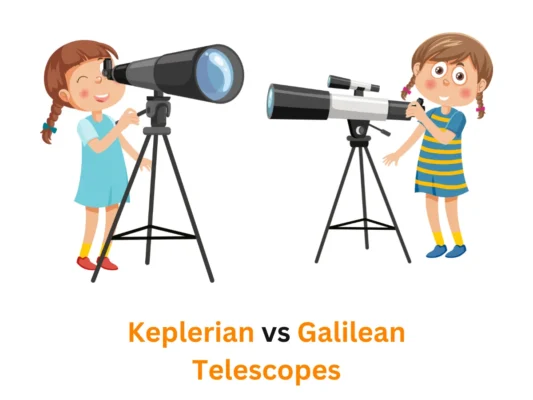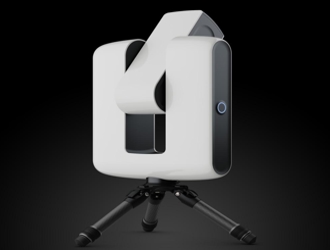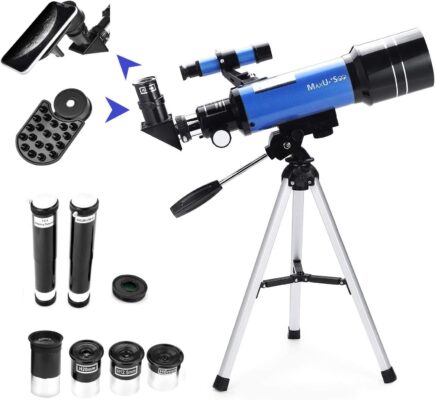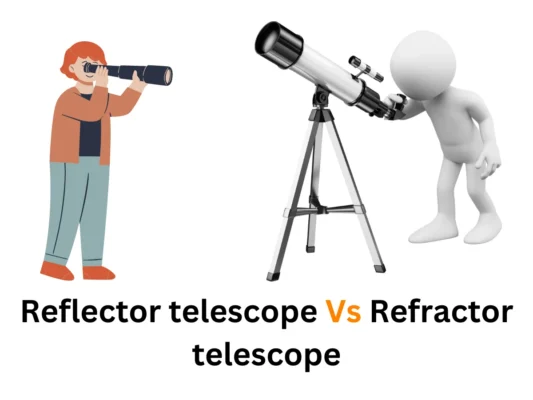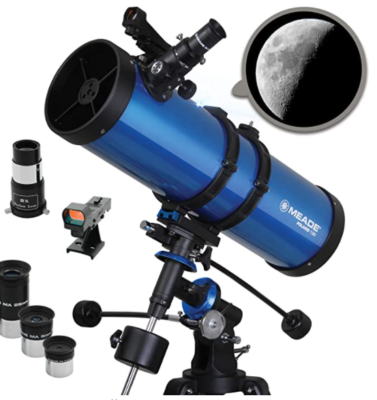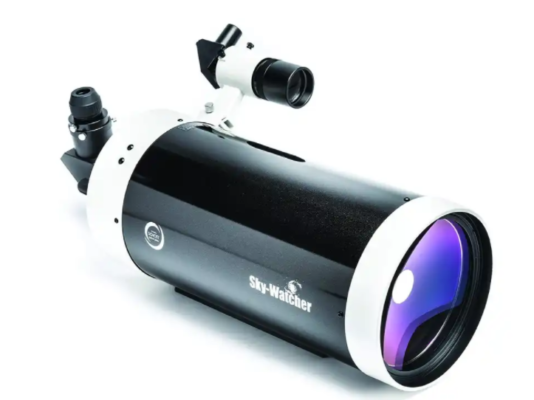Are you looking for the best telescope without breaking the bank? In this blog post, we will give you an overview of the top-rated best cheap telescopes that are perfect for aspiring astronomers. Whether you’re searching for a pocket-sized telescope or a more substantial model with all the bells and whistles, there is something that fits your budget. With these budget-friendly instruments, you’ll be able to explore galaxies from your very own backyard! Read on to discover what makes each of our picks stand out and suit your needs best.
List of Top 7 Best cheap Telescopes
When it comes to cheap telescopes, there are several options available that can provide good value for money while still delivering decent performance. Here are a few of the best cheap telescopes.
[affiliatable id=’174223′]Meade Instruments – Infinity 70mm Aperture, Portable Refracting Astronomy Telescope
The Meade Instruments Infinity 70mm Portable Refracting Telescope is a great way to view objects in the night sky. With a focal length of 700mm and an aperture of 70mm, this telescope is perfect for anyone looking to explore the universe. The altazimuth mount with slow motion control rod ensures precision tracking, meaning you can easily follow objects day or night. The included eyepieces provide low (26mm) and high (9mm) magnification views, while the 2x Barlow lens doubles the magnifying power of each eyepiece.
The red dot viewfinder allows for easy pointing, and the accessory tray stores all of your accessories while observing. The included software and instructional DVD make it easy to get started with astronomy.
Specifications
Brand: MEADE
Model: Infinity
Objective Lens Diameter: 70 Millimeters
Mount: Altazimuth Mount
Weight: 7 Pounds
Dimensions: 43″D x 33″W x 57″H
[joomdev-wpc-pros-cons disable_title=”yes” wpc_style=”wppc-view1″ title_tag=”H3″ title=”Title Here” pros_title=”Pros” cons_title=”Cons” button_text=”Get it now” disable_button=”yes” button_link=”” button_link_target=”_SELF” button_rel_attr=”dofollow” verdict_text=””][joomdev-wpc-pros]- You can see objects in the sky more clearly.
- The telescope is easy to use.
- It includes helpful accessories
- Limited Magnification Range.
114mm Newtonian Telescope with EQ3 Mounted Telescope
Looking for a way to get a closer look at our planets, stars, and other deep-sky objects? Check out our Stargazer telescope, which features a 114mm aperture and impressive light-gathering capabilities. With its durable mount, you can smoothly track celestial objects, while its high-quality design ensures precision guidance.
Plus, with a fast focal ratio of F/4.3, this telescope shortens exposure times for sharper deep-sky photography. And if you’re looking to document your observations or share them with friends, this telescope is compatible with smart devices.
Specifications
Brand: Explore Scientific
Model: FirstLight
Objective Lens Diameter: 114 Millimeters
Mount: Equatorial Mount
Weight: 12.5 Pounds
Dimensions: 35.04″D x 14.57″W x 8.27″H
[joomdev-wpc-pros-cons disable_title=”yes” wpc_style=”wppc-view1″ title_tag=”H3″ title=”Title Here” pros_title=”Pros” cons_title=”Cons” button_text=”Get it now” disable_button=”yes” button_link=”” button_link_target=”_SELF” button_rel_attr=”dofollow” verdict_text=””][joomdev-wpc-pros]- Explore the night sky.
- See planets, stars, and other objects in greater detail.
- Impress your friends with your knowledge of astronomy.
- Limited compatibility.
Celestron – PowerSeeker 127EQ Telescope
If you’re looking for your first telescope, or want an easy-to-use model for the whole family, the Celestron PowerSeeker 127EQ is a great choice. This 127mm Newtonian Reflector offers enough light gathering ability to see planets, the Moon’s craters, distant stars, the Orion Nebula, and more.
The German Equatorial Mount makes it easy to navigate the sky, and with its slow-motion altitude rod, you can follow celestial objects smoothly and accurately as they drift across the night sky. The telescope is also compact and lightweight, making it easy to take with you on camping trips or dark sky observing excursions.
Specifications
Brand: Celestron
Model: Celestron PowerSeeker
Objective Lens Diameter: 127 Millimeters
Mount: Equatorial Mount
Weight: 21.4 Pounds
Dimensions: 29.92″D x 16.73″W x 8.46″H
[joomdev-wpc-pros-cons disable_title=”yes” wpc_style=”wppc-view1″ title_tag=”H3″ title=”Title Here” pros_title=”Pros” cons_title=”Cons” button_text=”Get it now” disable_button=”yes” button_link=”” button_link_target=”_SELF” button_rel_attr=”dofollow” verdict_text=””][joomdev-wpc-pros]- Lightweight and easy to carry around.
- Powerful objective lens.
- You’ll be able to see things in greater detail than ever before.
- Some users may find the included full-height tripod to be less stable than desired, especially in windy.
Celestron – 70mm Travel Scope – Portable Refractor Telescope
Looking for a quality telescope that won’t break the bank? Look no further than the Celestron – PowerSeeker 127EQ Telescope. This powerful device offers superior optics, thanks to its fully-coated glass optics and 70mm objective lens. You’ll be able to see celestial objects at night and land-based objects during the day with great clarity, making this one of the best beginner telescopes on the market today.
Plus, it’s easy to use Just attach the included eyepieces and you’re ready to go. The Celestron PowerSeeker 127EQ Telescope also comes with a bonus bag, tripod, and software, making it the perfect gift for any occasion.
Specifications
Brand: Celestron
Model: 21035
Objective Lens Diameter: 70 Millimeters
Weight: 3.3 Pounds
Dimensions: 18″D x 7″W x 14″H
[joomdev-wpc-pros-cons disable_title=”yes” wpc_style=”wppc-view1″ title_tag=”H3″ title=”Title Here” pros_title=”Pros” cons_title=”Cons” button_text=”Get it now” disable_button=”yes” button_link=”” button_link_target=”_SELF” button_rel_attr=”dofollow” verdict_text=””][joomdev-wpc-pros]- 70mm objective lens.
- fully-coated glass optics.
- Easy to use.
- Expensive.
AW 50mm Aperture 360mm Astronomy Refractor Telescope
Looking for a telescope that’s both portable and versatile? Look no further than the AW 50mm Aperture 360mm Astronomy Refractor Telescope. This telescope is perfect for camping and traveling , as it features a detachable design that makes it easy to store and carry. It’s also great for observing the moon and stars, thanks to its large aperture and lightweight. In addition, the telescope comes with a constellation guiding map that helps beginners and kids learn about different constellations.
, as it features a detachable design that makes it easy to store and carry. It’s also great for observing the moon and stars, thanks to its large aperture and lightweight. In addition, the telescope comes with a constellation guiding map that helps beginners and kids learn about different constellations.
This telescope also features high magnification power, thanks to its 360mm focal length and 2 replaceable eyepieces (H20mm&H6mm). With the included 3X Barlow lens, you can vary magnification from 18x to 180x. So whether you’re a beginner or an experienced astronomer, the AW 50mm Aperture 360mm Astronomy Refractor Telescope is sure to meet your needs.
Specifications
Brand: AW
Objective Lens Diameter: 50 Millimeters
Optical Tube Length: 440 Millimeters
Weight: 1.3 Pounds
Dimensions: 17.32″D x 14.57″W x 18.7″H
[joomdev-wpc-pros-cons disable_title=”yes” wpc_style=”wppc-view1″ title_tag=”H3″ title=”Title Here” pros_title=”Pros” cons_title=”Cons” button_text=”Get it now” disable_button=”yes” button_link=”” button_link_target=”_SELF” button_rel_attr=”dofollow” verdict_text=””][joomdev-wpc-pros]- Portable and easy to carry around.
- A clear view of objects.
- Variety of magnification options.
- Tripod is not much stable.
70mm Aperture 400mm AZ Mount Astronomical Refracting Telescope
Looking for a telescope that will let you explore the night sky in detail? Then check out the 70mm Aperture 400mm AZ Mount Astronomical Refracting Telescope. With its large aperture of 70mm and focal length of 400mm, this telescope can provide clear and detailed images of stars and other celestial objects. The quality optics glass lens also features high transmission coatings, which reduce reflections and increase the amount of light that reaches the eyepiece.
This results in brighter and more vibrant images, making it easier to see all the detail hidden in the night sky. The telescope also comes with two replaceable eyepieces and a 3x Barlow lens, which triples the magnifying power of each eyepiece. So whether you’re a beginner looking to explore the wonders of space or an advanced amateur astronomer looking for a powerful telescope, the 70mm Aperture 400mm AZ Mount Astronomical Refracting Telescope is a great option.
Specifications
Brand: Gskyer
Eye Piece Lens: Barlow
Objective Lens Diameter: 70 Millimeters
Mount: Altazimuth Mount
Weight: 2.6 Kilograms
Dimensions: 24.8″D x 4.92″W x 8.46″H
[joomdev-wpc-pros-cons disable_title=”yes” wpc_style=”wppc-view1″ title_tag=”H3″ title=”Title Here” pros_title=”Pros” cons_title=”Cons” button_text=”Get it now” disable_button=”yes” button_link=”” button_link_target=”_SELF” button_rel_attr=”dofollow” verdict_text=””][joomdev-wpc-pros]- See brighter and more vibrant images of the night sky.
- Get greater magnification for detailed exploration.
- Discover new wonders in the night sky every time you use your telescope.
- Not be suitable for observing other celestial objects such as planets or deep-sky objects.
ToyerBee Telescope
Looking for an ideal telescope for beginners? ToyerBee Telescope is exactly what you need! Being outfitted with a large 70mm aperture and 300x magnification, our telescope can help you view planets, the moon, and other objects in the night sky more clearly than ever before. Plus, the 2 eyepieces and 3x Barlow lens provide even more magnifying power, making it a great choice for both adults and kids alike. So don’t wait any longer order your ToyerBee Telescope today.
Specifications
Brand: ToyerBee
Eye Piece Lens: Barlow
Objective Lens Diameter: 70 Millimeters
Mount: Altazimuth Mount
Weight: 3.61 Kilograms
Dimensions: 11.8″D x 5.5″W x 20.9″H
[joomdev-wpc-pros-cons disable_title=”yes” wpc_style=”wppc-view1″ title_tag=”H3″ title=”Title Here” pros_title=”Pros” cons_title=”Cons” button_text=”Get it now” disable_button=”yes” button_link=”” button_link_target=”_SELF” button_rel_attr=”dofollow” verdict_text=””][joomdev-wpc-pros]- Kids can see objects in greater detail.
- Aperture increases the amount of light that enters the telescope, for brighter and clearer images.
- Gaze up at the stars with your child and marvel at their beauty.
- Larger and heavier telescope.
Buying Guide for the Best Cheap Telescopes
Here’s our guide to help you select the best cheap telescope for your needs and budget.
Consider Your Budget: Before shopping for a telescope, it’s important to consider your budget and what you can afford. Telescopes have many different levels of quality and features, so it’s important to look for one that fits within your price range. Generally speaking, cheaper telescopes tend to offer less portability and use lower-quality components than higher-priced models.
Choose The Right Aperture: The aperture is simply the diameter of the telescope’s main optics — such as lenses or mirrors — and it will determine how much light the scope can capture and how well it works in low light conditions. A larger aperture means more detail when viewing deep sky objects like galaxies or nebula, so try to aim for at least 4 inches (10 cm).
Decide on Mount Type: Telescopes come with either an altazimuth mount or equatorial mount, both with their own advantages and disadvantages. An altazimuth mount is simpler to use but lacks precision when tracking celestial objects across the night sky; meanwhile, an equatorial mount provides much better tracking but requires more setup time and experience to operate properly.
Pick A Design: Reflector telescopes (which use mirrors) tend to be less expensive than refractor telescopes (which use lenses) because they’re easier to construct; however reflectors require frequent collimation (alignment). Catadioptric designs combine elements from both reflector and refractor scopes into one design that offers good performance but can be expensive compared to traditional designs – though still generally cheaper than high-end refractors.
Look For Quality Components: When purchasing a cheap scope make sure that all of its components are made with good quality materials check specs closely before buying something if possible! Avoid any scopes made with plastic parts; these won’t last very long in harsh outdoor conditions and often aren’t worth their cost savings due to limited performance over time.
Consider Accessories: Many telescopes come with extras like finderscopes or eyepieces included in the box, which can save money in the long run since buying them separately would add up quickly. Also, keep an eye out for sales that include accessories like tripod stands or carrying bags as part of their package deals these types of bonuses could make even a cheap telescope much more versatile over time.
You can check reviews of telescopes here
- Best Dobsonian Telescopes
- Best Computerized telescope
- Best Telescope for Astrophotography
- Best Dobsonian Telescope for beginners
- Best Telescope For Viewing Planets and galaxies\
FAQs
What is the best cheap telescope for amateur astronomers?
The Celestron 21035 Travel Scope 70mm Refractor Telescope is a great choice for amateur astronomers looking for an affordable telescope. It features fully coated glass optics, a lightweight aluminum tripod and mounting accessories, and two eyepieces that provide low-power and high-power views of the night sky.
Can I use this telescope to look at the planets?
Yes! This telescope will allow you to observe many of the brighter planets in our solar system such as Jupiter, Saturn, and Mars. With its 70mm aperture, it can also be used to capture detailed images of deep sky objects like galaxies, nebulae, and star clusters.
How easy is it to set up this telescope?
This telescope is relatively easy to set up all you need to do is attach the accessory tray, mount the tripod legs, and extend them to their proper height. Then attach the optical tube assembly to the mount and make sure it’s securely fastened before proceeding with aligning your scope with celestial objects.
What accessories are included with this telescope?
The package comes with a lightweight aluminum tripod, two 1.25″ eyepieces (10mm & 20mm), a finderscope for pointing the way towards objects in space, a smartphone adapter for capturing photos of what you see through your eyepiece or attaching your camera directly to your scope for astrophotography sessions, and a carrying bag for easy transport when traveling with your gear.
Does this telescope require any additional components in order to use?
No, everything you need comes included in the box. All that’s required is 8 AA batteries (not included) which power the motorized tracking feature on mount allowing you more time exploring celestial objects without spending hours finding them manually each time you want to view them through your scope.

